The Wall That Woke Me
What matters is that you see it and you allow it to mean everything to you
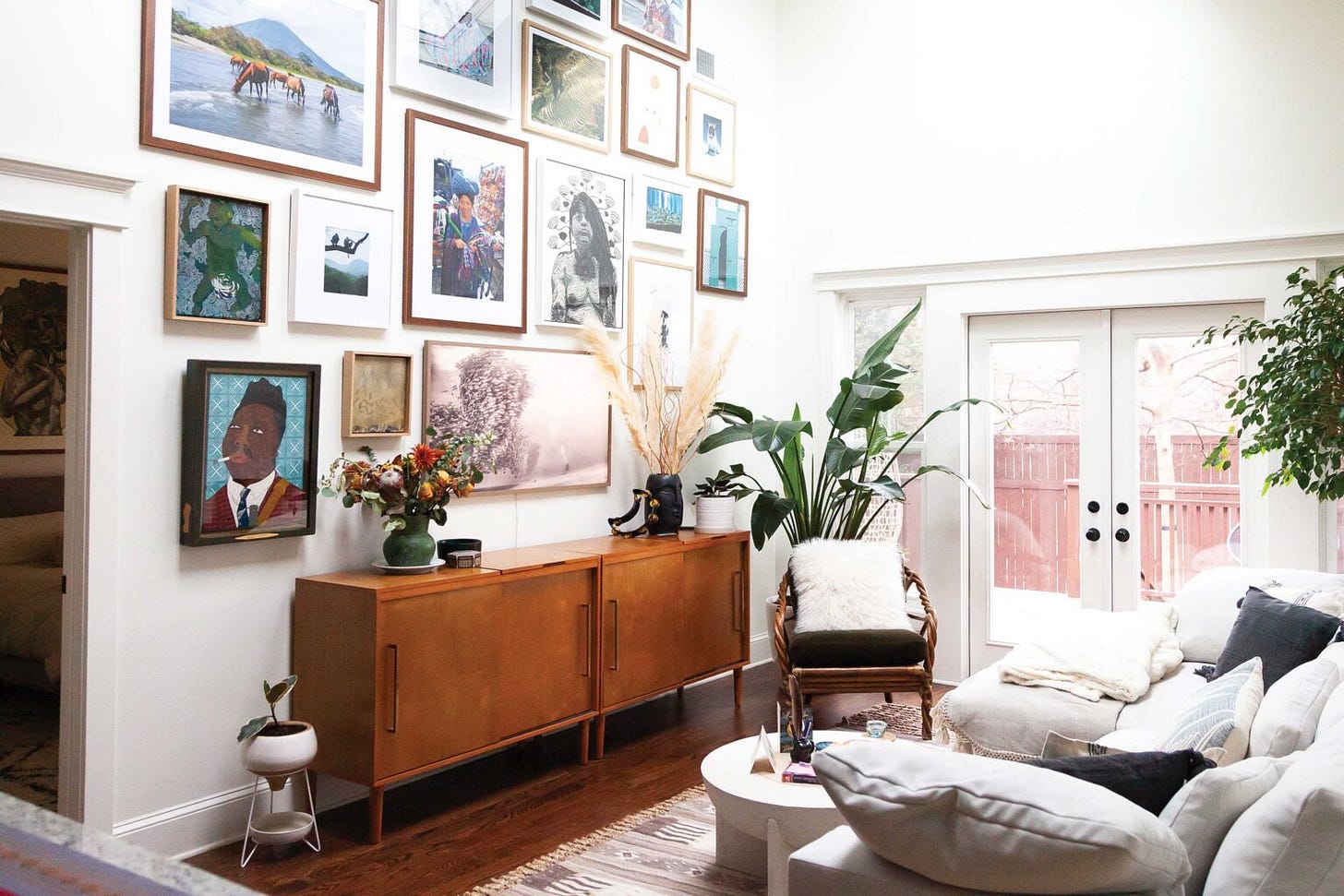
When I first commissioned a gallery wall from my childhood friend, it was meant to be an autobiographical piece — a story of my life told through art I created and collected. There were the photographs I took in my travels around the world: the lady in the narrow streets of Chichicastenango adorned with tapestries and bright woven bracelets for sale; the geisha as the sakura blossom swung across her face, eyes lowered and demure; the herd of horses who rushed me on the beach of Ometepe to drink from the waters of el Lago de Nicaragua. The paintings I created in college — the Salvador Dalí study and the piece, Defiance, that made it into an art show but didn’t sell — were interspersed with my friends’ paintings. Like Daniel Marosi who captured our life in Miami Beach in a painterly malaise, sundrunk and wild. I juxtaposed fine art pieces from artists like Chris Antieau and Sergio Suarez with pieces I found in flea markets and, in one case, a rock climbing gym. All of the pieces had a story to tell about a moment in my life, and because I marked it with a piece or a photo, it gave that moment more richness, more depth. Stitched together the pieces on the wall would become a patchwork quilt woven together. The story of the switchback trail I had lived so far told across 17 feet of white walls.
The selected pieces were framed and the installation was just about ready to begin, when I had a terrible accident in the park. I know it sounds ridiculous (who gets injured after playing the ukulele at a picnic), but grass was covering that hole in the ground, so when I stepped into it the snap of my ankle was audible. I fell to the ground in searing pain and my ankle swelled up to the size of a grapefruit. My sister, Laura, ran for help while I sized up the distance to the street, wondering if I could crawl to an Uber to go to the hospital. It was far too far, at least 200 yards, but Laura found a good samaritan in a rickshaw to peddled me home and my neighbor, a nurse, triaged medical support. Don’t go to the ER, she warned. They won’t take this seriously and you’ll just be exposed to COVID. So I self-medicated until I heard from my Uncle who was able to take me in his orthopedic office first thing the next morning. My ankle was sprained so severely that I would need surgery and 6 months without walking or driving, which was devastating news for someone adjusting to a new city. I had just moved to Atlanta when San Francisco’s lock down became unbearable in the wake of a difficult breakup and I was ready to start my life. And now instead of building, I was being torn down. I was injured, grounded, and alone in a new city. The world was finally opening up again but I was stuck in this empty house, on this couch. Isolation stretched in front of me like the painted lines of long desert roads to the end of the earth. How would I survive this?
On the day of the installation, I sat on the couch next to McGroover my mobility scooter — ankle iced and elevated — as the art pieces began to go up. First the young indigenous girl from Oaxaca, full lips and breasts exposed and an agave growing from her throat chakra. She did not smile or perform, as she occupied the space of simple black and white. I thought about how much anger I had toward my body. How clumsy and accident prone I was. How much pain I carried, from accidents yes but also chronic pain in my hips and shoulders. She owned her body powerfully, beautifully as she inhabited the piece, chest proud and curves on full display. Something about her countenance invited me to love my body, even in the pain.
But it was Monica who moved me. That photograph of Monica, my friend ziplining into a treehouse in the Bokeo National Reserve, red hair streaming against the jungle canopy. Here was a woman — my friend — soaring above the forest floor in the remotest part of Laos so she could see endangered gibbons. And I had been there with her. I had been part of this surreal experience, hiking through the jungle, sleeping in treehouses and eating sticky rice off of banana leaves. We looked for monkeys in the canopies of the forest, and climbed ancient banyan trees, before we took a boat down the Mekong River to Luang Prabang. It was there, with Monica and Jenny, that I had met Alan, but it was somewhere between Veng Vieng and Ha Long Bay that I fell in love with him. And right there on the wall next to Monica was a picture of the rice terraces in Sapa, Vietnam. This is where I realized I couldn’t go on to Australia and become a divemaster with him. That was where we parted ways and went to opposite sides of the world. Sapa was where I journaled on that hilltop and asked the universe to bring me a job that would pay me to travel the world. Three years later, that job would come and pour even more beauty into my life.
Piece by piece, the wall showed me the richness of my life: I swam naked in bioluminescent waters across Asia; I sandboarded the dunes of the Sahara and sang by the fire with the Bedouin people; I saw wild manta rays in the Andaman Sea and restored coral reefs in the warm waters of the Florida Keys; I fell in the love for the first time in the islands of Nicaragua on an island of mangoes; I hiked broken roads to sing to the burning lava of Big Island. I experienced unbelievable places and rich adventures across the far reaches of the world. Moreover, I had experienced deep love and friendship with strangers and life long friends I’d met along the way.
That’s when something shifted. I realized that part of me that was asking for more was a pattern seeking distraction and validation. I didn’t need more experiences to be happy, just like I didn’t need more stuff or clothes. The part of me that cried for more, more, more was a hungry ghost. It would never be satisfied and letting it drive me would mean I would never find peace, appreciation, or presence.
The act of being grounded, looking up at this wall, slowing down to really look at these experiences in my life, satisfied something inside that has been very hungry. I realized that it wasn’t hungry for more, it was hungry for depth of meaning.… By taking the time to reflect and surround myself with the things I care about, to curate my life experience, to curate my home, it’s an act of editing and allowing your life to become a work of art.
- Emily Fields Joffrion for Fine Art Connoisseur Magazine
My injury slowed me down and kept me grounded. And it was in that state of groundedness that I began to feast on the richness of the experiences I had already lived. The gallery became a daily act of gratitude: a ritual that allowed me fill my heart with deep appreciation for the brilliant life that I had lived and was creating. This softened me and soothed me from feeling resentment around my pain and anger at my body. My pain became a teacher. My recovery became a time of reflection and deep healing. I asked it what I needed to learn and I listened.
In April of 2025, I sold the house on Josephine Street. Before I listed the house, I sat in front of that gallery wall in appreciation for all that I had learned. I touched the walls throughout the space and thanked the home for being there, for protecting me and giving me a space to host my loved ones for holidays and hurricane evacuations. This place held me during one of my hardest seasons and now it was time to let it go and allow the next person to cherish it and build their own memories in the space.
I brought my beloved art wall to my new home in San Francisco. After six months of sitting with white walls and adjusting to this new space, rebuilding my community and my creative life here, I am finally ready to bring my art — my life force — into this space. With every piece that went up, energy surged through my body. It said, I live here and I love my life. And while I will have many more adventures, I also treasure the mundane in my life here: greeting my neighbor Mrs. Charlotte as she tidies her driveway; stumbling on the neighborhood singalong on Baker and Page; picking up sundries at the “sexy picnic bodega” that got the neighborhood through those hard, early days of COVID. I get to create more joy, have more adventures and also be a good friend, neighbor, and partner to the people I love.
Art taught me how to see — it taught me how to love light, composition, color, contrast and the magic of working with the shadow. But the wall taught me about how to slow down and use the power of attention. I learned that by putting the things I cherish on display — by focusing on them — I give them the reverence of my attention, which becomes my perception and personal reality. By offering the things I cherish space to be seen, noticed, and appreciated, I allow them to unfold into the full, rich stories that shape my life experience. It doesn’t matter how fleeting a moment or a feeling. It can be the way the morning light bends rainbows on your floor, the curling steam dancing from a coffee cup, a bee dipping from blossom to blossom, the crisp of cicadas in summer. What matters is that you see it and you allow it to mean everything to you.
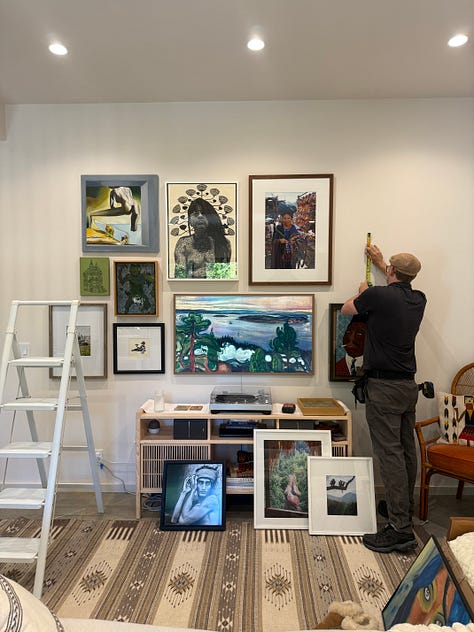
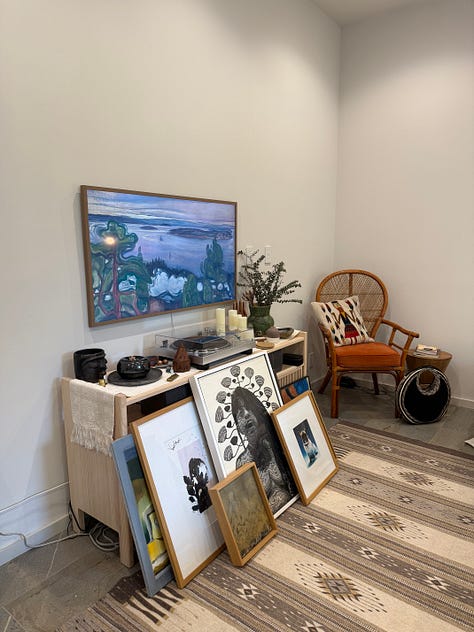
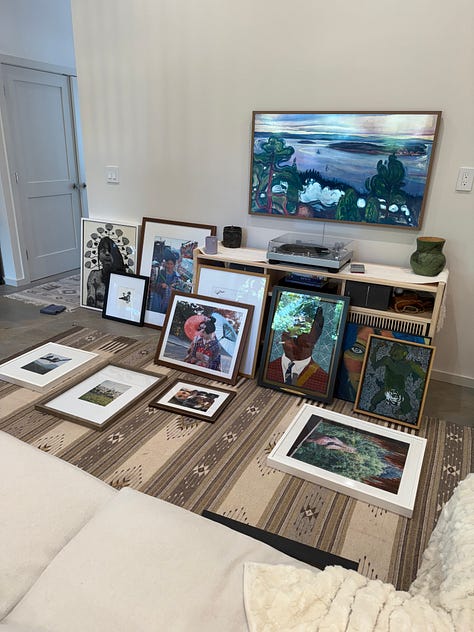

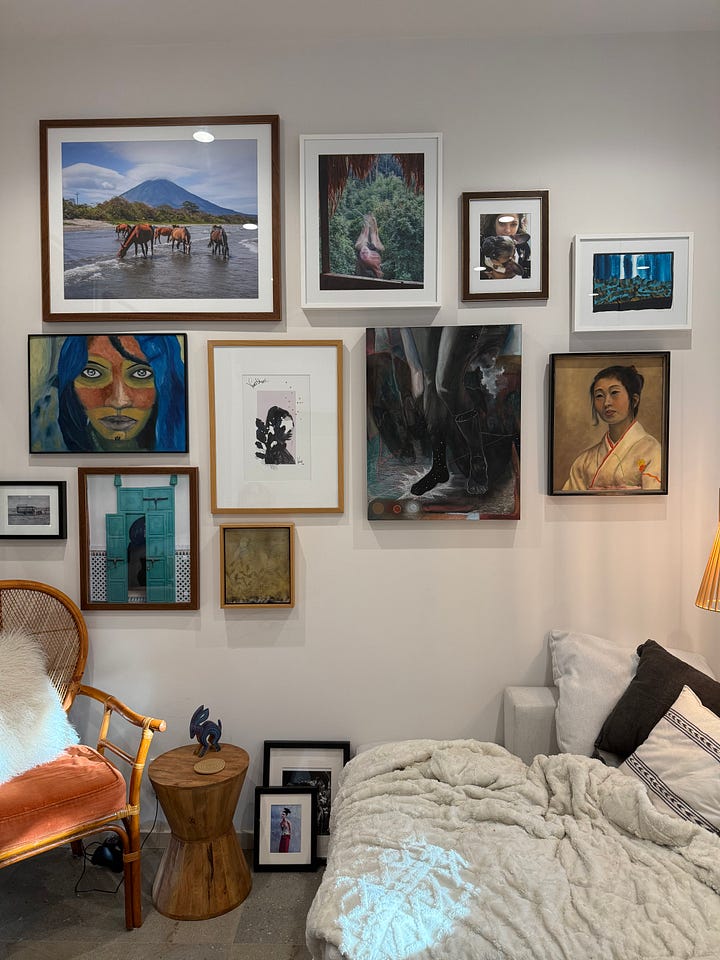




I truly could not love this more! It started with just the wall that had all of the feels, ALL. And then the story behind it came flooding though. Inspirational AND your journey resonates deeply. xo
I love learning the backstory of your art wall!! And it's a beautiful reminder of how rich life is, and how little we can ever really know of a person's past experiences that make them who they are. Of course, I had no idea of all this significance when you mentioned you were about to install your art at Queenston 😊